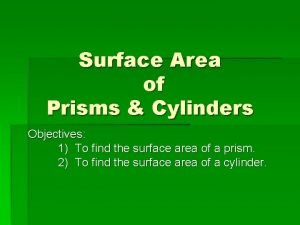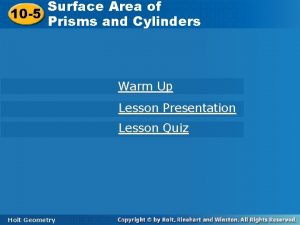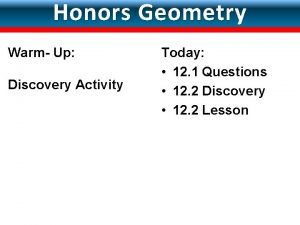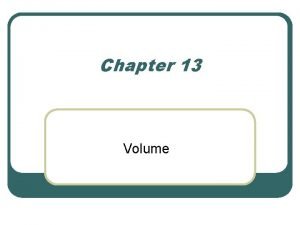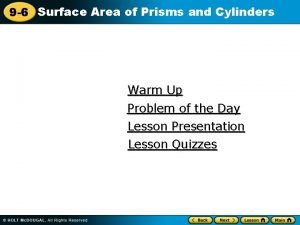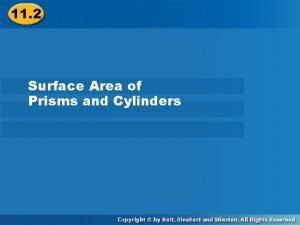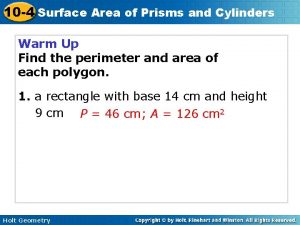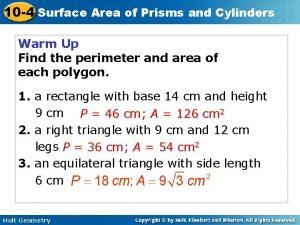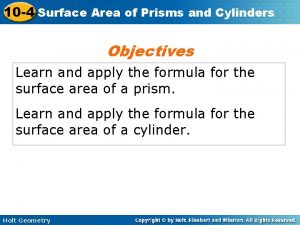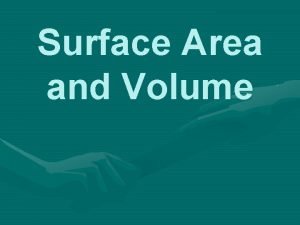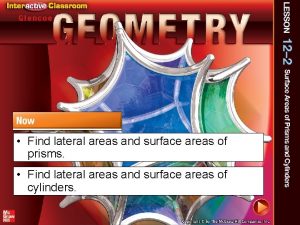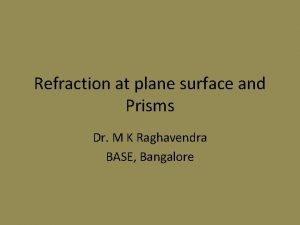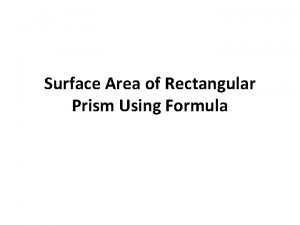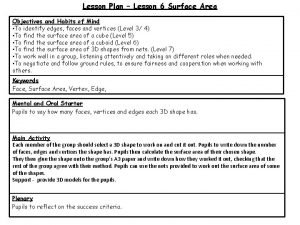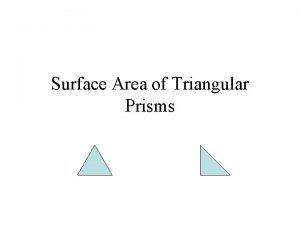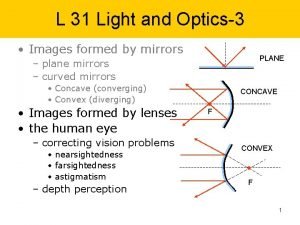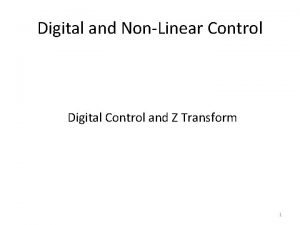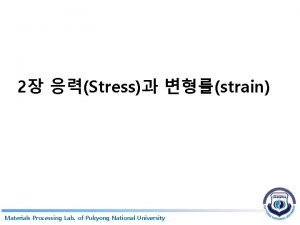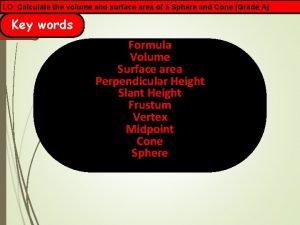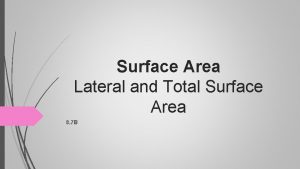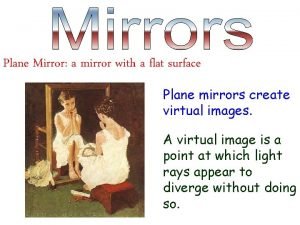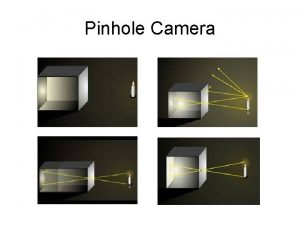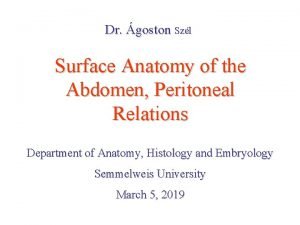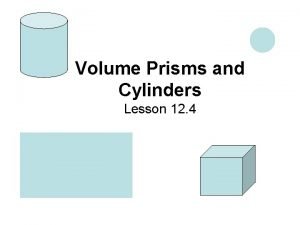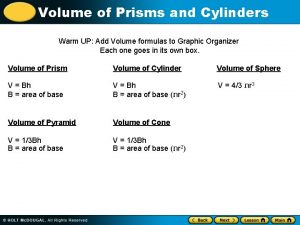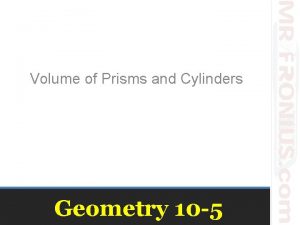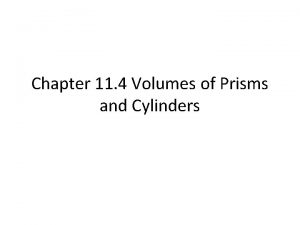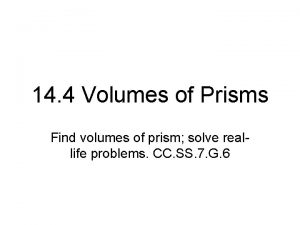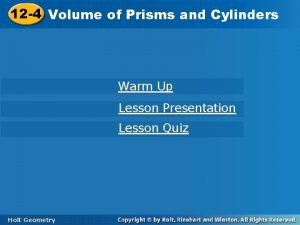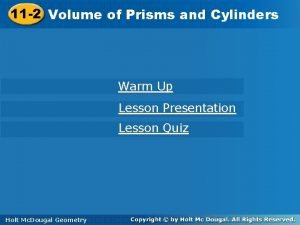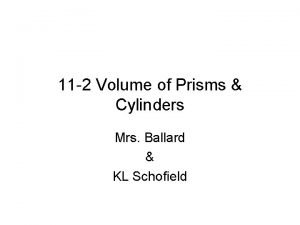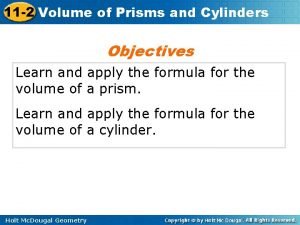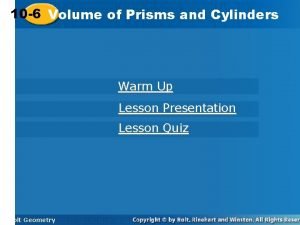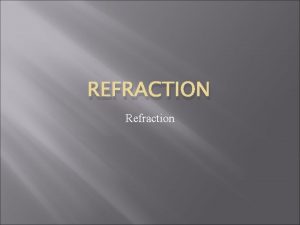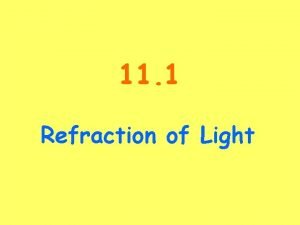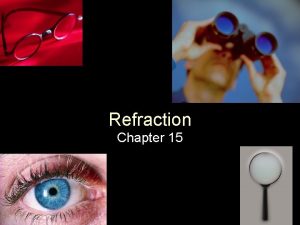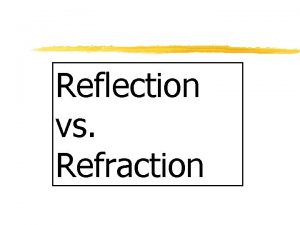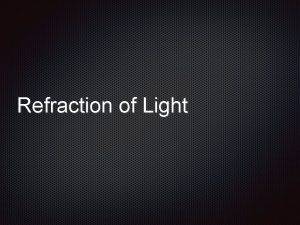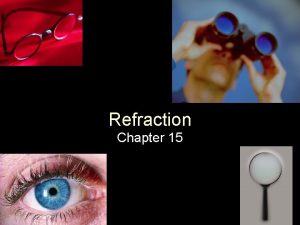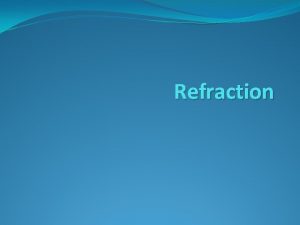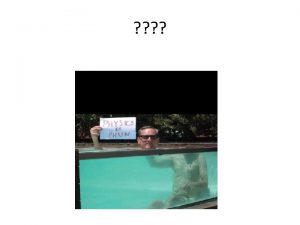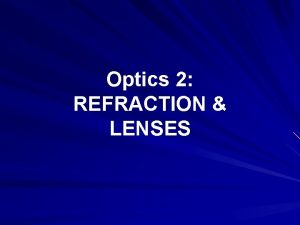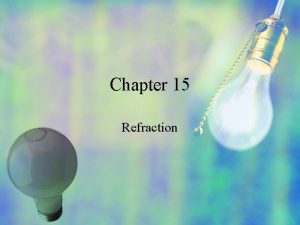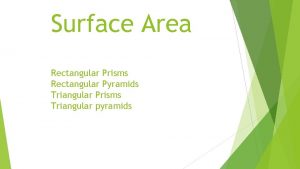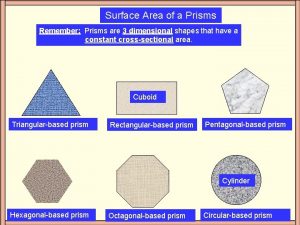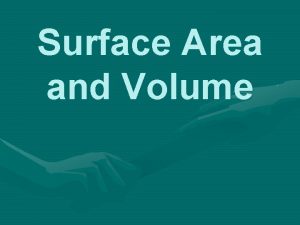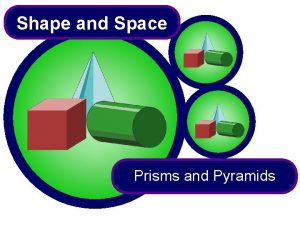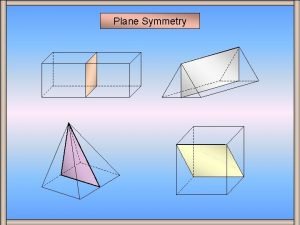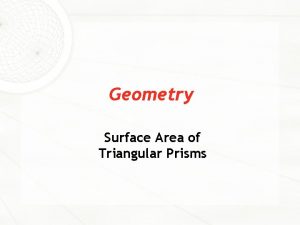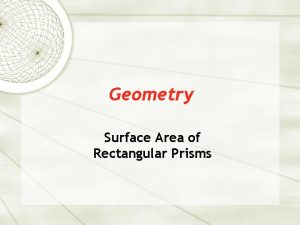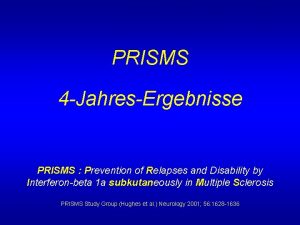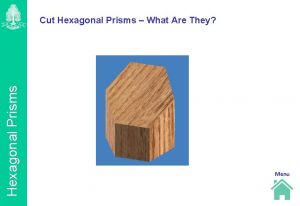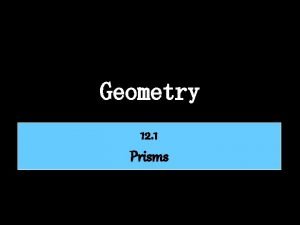Refraction at plane surface and Prisms Dr M







































- Slides: 39

Refraction at plane surface and Prisms Dr. M K Raghavendra BASE, Bangalore

Type 1 – Snell’s law and RI Snell’s law: Absolute R I in terms of speed of light Modified Snell’s law Relative R I in terms of speed of light Relative R I in terms of absolute R I Relative R I in terms of wavelength of light Frequency remains constant

1) A ray of light is incident on the interface of two media at an angle of 450 and is refracted in to the other medium at an angle of 300. If the speed of light in the first medium is 3 X 108 ms-1 , what is the speed of light in the second medium? (1) 1. 96 X 108 ms-1 (2) 2. 12 X 108 ms-1 (3) 3. 18 X 108 ms-1 (4) 3. 33 X 108 ms-1

Snell’s law: Thus

2)A ray of light is travelling from medium A to medium B. The angle of incidence is i and that of refraction is r. Graph between sin(i) and sin(r) is as shown in Figure below. We can conclude the following (i) Speed of light in medium B is three-fourth of that in medium A. (ii) Total internal reflection cannot take place. (iii) Refractive index of medium B is greater than that of medium A. sin (r) O Correct conclusions are (1) Only (i) and (ii) (3) (i), (ii) and (iii) 370 sin (i) (2) Only (ii) and (iii) (4) Only (i) and (iii)

The slope of the straight line: sin (r) O 370 sin (i) Medium B is denser than medium A Since nb > na TIR cannot take place

3) Given refractive index of glass with respect to air is ang = 3/2 and that of water with respect to air is anw = 4/3, the refractive index of glass with respect to water is (1) 8/9 (2) 9/8 (3) 2 (4) 1/2


Type 2: Normal Shift and Lateral Shift Lateral shift Normal shift a) Object in denser b) Object in rarer

4) A vessel of height h is filled with a liquid of refractive index n 1 to a height h/2 and the upper half of the vessel is filled with a liquid of refractive index n 2. The apparent depth of the vessel as seen along the normal is 1) 2) 3) 4)

In case of one liquid the apparent depth is given by In case of many layers of liquid

5) A ray of light passes through four transparent media with refractive indices � 1� 2� 3 and � 4 as shown in the figure. The surfaces of all media are parallel. If the emergent ray CD is parallel to the incident ray AB, we must have (1) (2) (3) (4) � 1 = � 2 = � 3 = � 4 =� 1 D B A C

Apply to medium 1 and medium 4 Since ray AB and CD are parallel, i 1 and i 4 are equal Implies � 1 = � 4

6) An ink dot on a paper placed on a table top is viewed from a distance of 30 cm above it with the help of a telescope. A 16 cm thick glass slab is placed on the ink dot. By what distance the telescope should be raised to refocus the ink dot ? The refractive index of glass is 1. 6. (1) (2) (3) (4) 3 cm 4 cm 5 cm 6 cm

The telescope should be moved up by a distance (y) equal to normal shift produced by the slab

7) Consider the situation shown in the figure. The bottom of the vessel is a plane mirror, S is a small fish located at a height of H/2 from the plane of the mirror, T is a human eye located at a height of H from the surface of water. The distances at which the fish sees the images of the eye (with respect to its position) are T 1) H 2) 3) 4) H S (H/2)

Image 1 n. H + H/2 T H n. H + H A. P = n. H H S H/2) ( Image 1: H (n+1/2) n. H + H+H /2 Image 2: H (n+3/2) Image 2

Type 3: Critical angle and Total Internal Reflection

8) A, B and C are three optical media of respective critical angles C 1, C 2 and C 3. Total internal reflection of light can occur from A to B and also from B to C but not from C to A. Then the correct relation between critical angles is (1)C 1>C 2>C 3 (2) C 1= C 2= C 3 (3)C 3> C 1> C 2 (4)C 1<C 2<C 3

T I R can occur when light travels from medium A to medium B T I R can occur when light travels from medium B to medium C Therefore

9) What is the critical angle, C for calcite (� =1. 5) immersed in oil (� =1. 1)? (1) (2) (3) (4)


Type 4: Prism, angle of deviation, minimum deviation

10) The minimum angle of deviation for a prism of refractive index 1. 732 is equal to its refracting angle. What is the angle of prism? (1) 400 (2) 450 (3) 600 (4) 300

In this case A = D A/2 =300 Or A=60 o

11) A ray of light is incident on one refracting face of a prism of angle 750. It passes through the prism and is incident on the other face at critical angle. If the refractive index of the material of the prism is √ 2, then the angle of incidence on the first face is (1) 300 (2) 450 (3) 600 (4) 75 0

We know that r 1 + C =750 C = 450 r 1 =300 750 r 1 C

Type 5: Small angled prism , angular dispersion and dispersive power Deviation Angular dispersion Dispersive power In case of C D F line

12) The dispersive power of the material of the prism for which refractive index for violet and red colours are nv = 1. 524, nr = 1. 514 respectively is (1) (2) (3) (4) 0. 025 0. 034 0. 019 0. 015

Dispersive power is given by

Type 6: Combination of Prisms Dispersion with out deviation Deviation with out dispersion

13) A crown glass prism of 60 is cemented with a flint glass prism to form a pair which produces dispersion without deviation. If the refractive index of the crown glass prism is 1. 52 and that of flint glass 1. 66, then the angle of flint glass pair should be (1) 4. 730 (2) 5. 730 (3) 6. 730 (4) 7. 730

Condition for dispersion with out deviation is

Conceptual questions

14) Light appears to travel in straight line because (1)The frequency of light is very small (2) Light consists of very small particles (3) The wavelength of light is very small (4) The velocity of light is different for different colours.

15) When light is refracted through a prism, maximum deviation occurs when the following conditions are satisfied (i) the ray is incident grazing the first face (ii) the ray emerges out grazing its second face Options (1) Only in case (i) (2) Only in case (ii) (3) In both the cases (4) Not under these cases

16) A man is swimming underwater with undisturbed surface. Looking up at a bright sky through the water, he will see (1)a bright patch directly above whose angular size is independent of the depth of the swimmer (2)a shining surface of the water (3) just darkness (4) a bright patch directly above whose angular size depends upon the depth of the swimmer

CC

All the best Thank You
 Software-defined networking: a comprehensive survey
Software-defined networking: a comprehensive survey Surface area of prisms worksheet
Surface area of prisms worksheet Hexagonal prism surface area calculator
Hexagonal prism surface area calculator 10-4 surface area of prisms and cylinders answers
10-4 surface area of prisms and cylinders answers Volume and surface area of prisms maze
Volume and surface area of prisms maze 12-2 surface areas of prisms and cylinders
12-2 surface areas of prisms and cylinders Surface area of prisms and pyramids 13-2
Surface area of prisms and pyramids 13-2 Surface area problem solving
Surface area problem solving 11-2 surface area of prisms and cylinders
11-2 surface area of prisms and cylinders Lesson 10-4 surface area of prisms and cylinders
Lesson 10-4 surface area of prisms and cylinders Homework 5 surface area of prisms and cylinders
Homework 5 surface area of prisms and cylinders 10-4 surface area of prisms and cylinders answers
10-4 surface area of prisms and cylinders answers Rectangular prism unfolded
Rectangular prism unfolded Lateral surface area of a hexagonal prism
Lateral surface area of a hexagonal prism The refractive indices of crown glass prism for c d f
The refractive indices of crown glass prism for c d f Total surface area of a square prism formula
Total surface area of a square prism formula Lesson plan on cube and cuboid
Lesson plan on cube and cuboid Surface area of prism formula
Surface area of prism formula Why does light not bend when it hits a curved surface
Why does light not bend when it hits a curved surface Forwarding equivalence class (fec)
Forwarding equivalence class (fec) Digital control
Digital control 체적변형률
체적변형률 Curved surface area and total surface area of cone
Curved surface area and total surface area of cone Whats lateral surface
Whats lateral surface A mirror with a flat surface is a
A mirror with a flat surface is a Reflection of light at plane surface
Reflection of light at plane surface Hidden line orthographic projection
Hidden line orthographic projection The inner surface of a plane brick wall is at 60
The inner surface of a plane brick wall is at 60 Right subcostal region
Right subcostal region Fictional character
Fictional character Volume of prisms and cylinders worksheet
Volume of prisms and cylinders worksheet What is the volume of this prism
What is the volume of this prism Volume of a circular prism
Volume of a circular prism 11-4 volumes of prisms and cylinders
11-4 volumes of prisms and cylinders Volume of a trapezium
Volume of a trapezium Lesson 12-4 volumes of prisms and cylinders
Lesson 12-4 volumes of prisms and cylinders 11-2 volumes of prisms and cylinders
11-2 volumes of prisms and cylinders Prism ballard
Prism ballard 11-2 volume of prisms and cylinders answer key
11-2 volume of prisms and cylinders answer key Find the volume of the composite solid.
Find the volume of the composite solid.


